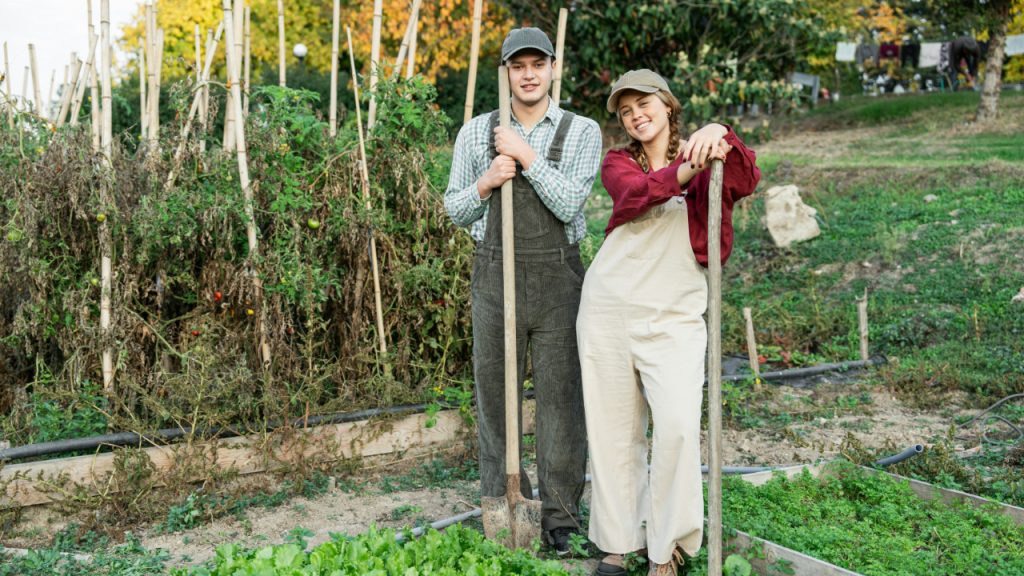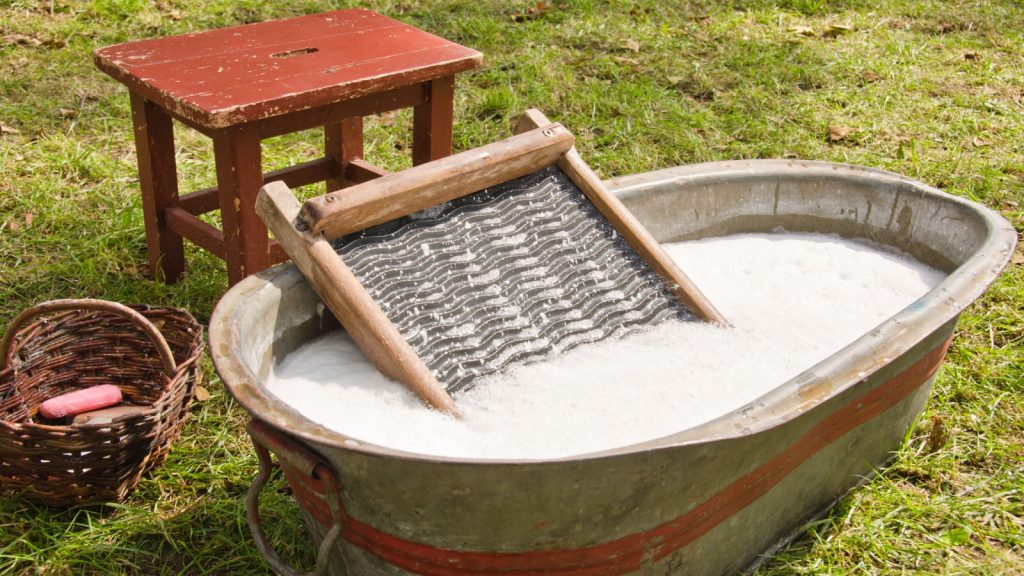Homesteading appeals to people dreaming of living more self-sufficiently – growing food, raising animals, and maybe even going off-grid. A common question is how much land is actually needed to homestead. The answer isn’t one-size-fits-all. It depends on your goals: Do you want a big vegetable garden and some chickens? Goats or a cow for dairy? Perhaps complete off-grid independence? Or maybe you only have a small urban space and just want to save on groceries or increase your self-reliance. But you don’t need hundreds of acres. Yes, a massive piece of land helps and is necessary if you want to be completely self-sufficient. However, even a small plot can meaningfully boost your self-reliance.
I’ve done a ridiculous amount of research to give you some concrete answers. While I know how much space I need for my homesteading and self-reliance endeavors (my wife would tell you that the answer is always more!), I learned a huge amount about how much you can grow and produce in even the smallest spaces. You’ll find all my sources at the end of the post.
Homesteading Goals Determine Land Needs
The first step is to define your homesteading goals. Land requirements vary widely based on what you want to do. A homestead focused on a vegetable garden and a few chickens will need far less space than one aiming to produce all of a family’s meat, dairy, and firewood. Here’s a rough guide for acreage needs by purpose:
- Home Fruit & Vegetable Garden (family use): About 0.25 to 1 acre. This size can supply a significant portion of a family’s produce.
- Small-Scale Crops for Income: Approximately 2 to 10 acres for those who want to sell surplus at a farmers’ market.
- Chickens (Eggs/Meat for household): Minimal space required. A backyard coop and run can fit in a typical yard.
- Pastured Poultry (income level): You can raise a few hundred chickens per acre of pasture with rotations.
- Goats or Sheep: Around 1 acre of good pasture per animal to graze adequately.
- Cattle (Cows): Around 2 acres of quality forage per cow for grazing (more if pasture is poor or additional hay isn’t purchased).
- Woodlot for Firewood: On the order of 10–20 acres to sustainably harvest timber for heating each year.
- Fully Off-Grid Lifestyle: Possibly 20+ acres if you want a larger woodlot or future timber harvest, or ample hunting land.
Not every homestead includes all these activities. Maybe you only garden and keep chickens on a 0.2-acre suburban lot, or perhaps you have 5 acres for gardens, goats, and an orchard. The key is to match your land to your priorities. Many people start small and expand over time.
Small Plots Can Boost Self-Reliance

You might be surprised what’s possible on a small piece of land. Even a quarter-acre or half-acre lot can produce a lot of food. In fact, many suburban yards are about this size – the median new home lot in the U.S. is only around 8,177 square feet (0.19 acres).
Consider gardening: the average American vegetable garden is about 600 square feet (perhaps a 20 ft by 30 ft area). That’s a typical backyard patch. Studies show a garden of that size can yield around $600 worth of produce per year, with only ~$70 in seeds and supplies. The National Gardening Association found that a median plot of 200 sq. feet can produce roughly 180 lbs of veggies in a season.
Example: A 0.25-acre yard = ~10,900 sq. ft. Even after allowing space for your house and driveway, you might have a few thousand square feet for planting. Just 500 sq. ft. of intensive garden beds can supply a significant portion of a family’s fresh veggies in summer. Even more so if you use vertical space.
Beyond veggies, a small plot can host a handful of backyard chickens for daily fresh eggs. Many cities allow a small flock even on <0.1 acre lots. A 4-hen coop might only be 20 sq. ft., plus a small fenced run. Those 4 hens could lay 600–800 eggs per year collectively.
The takeaway: small-scale homesteading is absolutely feasible. You won’t be 100% food self-sufficient on a quarter acre, but you can grow meaningful food and gain skills.
Growing Your Own Food: Garden Space Requirements
One of the most common homesteading goals is to grow fresh fruits and vegetables. So, how much garden do you need to feed your family?
Space Needs Per Person
A general guideline is about 150–200 square feet of garden per person for a year-round vegetable supply. By this estimate, a family of four might use 600–800 sq. ft. of growing area in intensive cultivation. Although from experience, I don’t like overly intensive practices and would suggest increasing this to at least 300 square feet per person. Plus a bit extra for growing extra produce to barter, sell, or preserve.
Understanding Typical Yields
Under average conditions, you might expect 0.5–1.0 pounds of produce per square foot of garden per growing season. So a 200 sq. ft. garden could yield ~100–200 lbs of vegetables. But it depends on what you grow. Some things yield more per square foot than others. And, if you also grow vertically, like trellising tomatoes, melons, zucchini, and other crops, you’ll dramatically increase your yield per square foot of soil.
Historical data shows surprisingly modest land can feed a family. Back in the 1930s, the USDA noted that about 0.5 acre of mixed vegetables, plus some fruit trees and a quarter-acre of potatoes, could supply most of an average family’s produce needs.
Maximizing Small Spaces
Fruit trees and perennials can fit into surprisingly small areas too. Dwarf and semi-dwarf fruit tree varieties allow you to grow apples, peaches, or cherries on trees that only need a small backyard corner. A couple of dwarf fruit trees might occupy 200 sq. ft. and yield bushels of fruit after a few years. Berry bushes and vines can be tucked along fences or property lines.
Key tip: If space is limited, focus on high-value crops – things that give a lot of nutrition or are expensive to buy. Greens, tomatoes, herbs, and berries are great choices for small gardens.
Backyard Chickens and Small Livestock
Adding animals to your homestead increases self-reliance. Chickens are often the first livestock for new homesteaders and require very little land. Many urban homesteaders keep hens in the backyard. For instance, a city like Tempe, AZ, allows up to 5 chickens in a residential yard.
A handful of laying hens can supply a family with a steady stream of fresh eggs. No pasture is required if you feed them kitchen scraps, garden extras, and commercial feed. You might dedicate a portion of your yard – perhaps a 100–200 sq. ft. run – for a few free-ranging hens.
Other small-footprint livestock include rabbits and bees. Rabbits can be raised in hutches with virtually no pasture. Bees take almost no space on the ground and can pollinate your garden while providing honey.
The main consideration with backyard livestock is often not acreage but regulations and neighbors. Many cities ban roosters due to noise, and larger animals might require a minimum lot size or a permit.
Goats, Sheep, and Other Medium Livestock
Moving up in animal size, we have creatures like dairy goats, sheep, or pigs. These animals can still be raised on a relatively small homestead, but you’ll need a bit more space than for chickens.
Keeping Goats
Goats are popular because they are smaller than cows and can thrive on less land. A rule of thumb is about 1 acre of good pasture per goat or sheep. If you don’t have an acre of grass, you can keep goats in a yard or pen and supplement with hay and grain – but you’ll then be buying a lot of feed. Goats are browsers (they like brush and weeds), so they’re great for clearing blackberries or kudzu on a property. A friend has a small but really useful herd of goats. She actually rents them out to clear overgrown land. It’s a brilliant way of bringing in money for the homestead, keeping the goats fed and content (they love love love to browse), and reducing feed costs. Plus, it’s a wonderfully ecologically sound, natural way to clear land without polluting it with chemicals.
Raising Sheep
Similar land needs as goats – roughly an acre per sheep for grazing. Sheep are grazers (prefer grass), while goats are browsers, but both can share a pasture. A small flock (2–3 sheep) could potentially be kept on an acre, rotating them in paddocks to avoid overgrazing. Sheep are surprisingly useful aside from their meat. They produce a lot of manure, happily clear weeds, grass, and end of season crops from a finished garden bed, and their fleece makes great mulch as well as yarn and cloth.
Managing Pigs
Pigs don’t graze like sheep or goats; they tend to root and dig. They can be raised in smaller enclosures as long as you bring them feed. For a couple of pigs, you might only need a few hundred square feet of pen space each, but you need a plan for feed.
One thing to remember is that pasture-based animals require enough land to prevent overgrazing. If you stock too many animals on too small an area, they will eat the plants down to dirt and potentially damage the land.
Cows and Larger Livestock
For many homesteaders, the ultimate goal is a family milk cow or to raise a beef steer. Cows are the largest common homestead animal and generally the most land-intensive. The classic advice is roughly 2 acres of good pasture per cow. This typically assumes a cow grazing during the growing season and hay or purchased feed in winter.
Why two acres? A full-size dairy cow or beef steer eats a lot. A lactating dairy cow can consume around 25–30 pounds of dry hay/forage a day. That’s roughly equivalent to what 2 acres of decent pasture can grow over a season.
If you don’t have two acres available, you can still keep a cow by bringing in all feed, but at that point the cow is essentially in a confined setup. Many suburban or urban homesteaders simply don’t have the land for a cow, and that’s when goats, which produce less milk but need far less space, shine.
What about raising your own beef or pork? To raise a steer to butcher, you’d similarly need 1–2 acres of good grazing for 18+ months. For pigs, as mentioned, land needs are more about managing their impact and growing feed.
Water Needs: A Critical Consideration
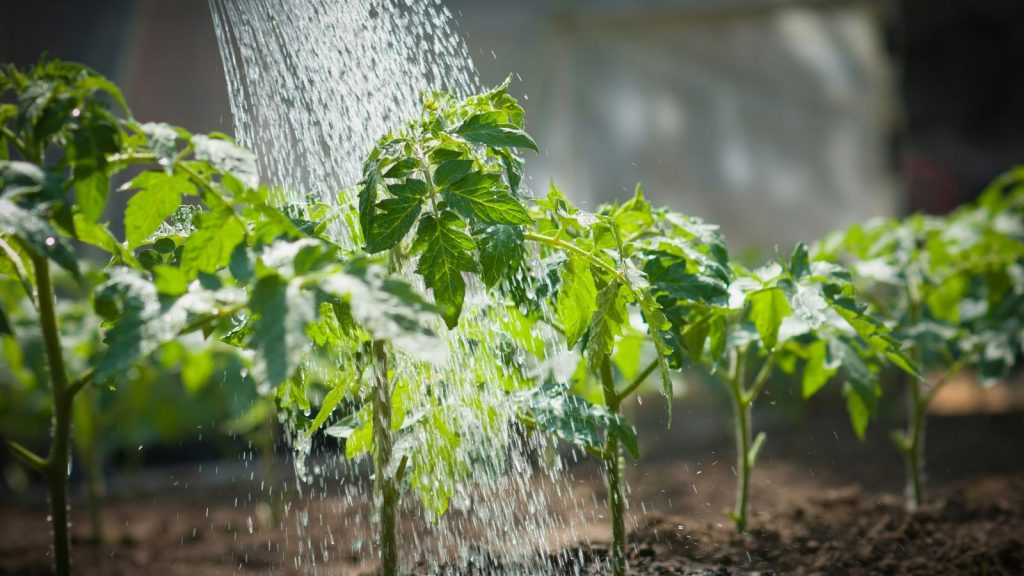
Land is one thing, but don’t forget about water! A common saying is “water is the limiting factor in agriculture.” Even a small homestead plot can consume a lot of water.
For perspective, 1 acre of land soaked with 1 inch of water is equal to about 27,000 gallons. In many climates, a garden might need 1–2 inches of water per week during the growing season. Over a whole season, that adds up.
Practical water facts for homesteaders:
- A typical garden hose delivers about 5–10 gallons per minute. Running it for 1 hour could use ~300–600 gallons.
- Rainfall is your friend – it’s essentially “free” irrigation.
- Consider rainwater harvesting if allowed. A 1,000 sq. ft. roof can collect ~600 gallons from just 1 inch of rain!
- Livestock also require water: a mature cow can drink 20+ gallons per day in hot weather; a goat or sheep maybe 1–3 gallons a day.
For off-grid homesteaders, water planning is critical. Lack of water can turn even fertile land into an unusable homestead.
Energy and Off-Grid Considerations
If your goal is to go fully off-grid and self-sufficient, some additional land uses come into play:
- Woodlot for Firewood: Roughly 10-20 acres of forest is suggested for a sustainable firewood supply for one household.
- Solar and Wind: Producing your own electricity doesn’t necessarily require a lot of land – solar panels can go on a roof or a small ground-mount array.
- Waste and Water Systems: An off-grid homestead often means a septic system or composting toilets. A septic drain field can take a sizable area (maybe 0.1 acre).
- Wild areas: It’s wise to leave some portions of your land wild or uncultivated if you have the acreage. This supports pollinators and wildlife.
Going fully off-grid on a small suburban lot would be extremely challenging, so typically the more self-sufficiency you want, the more acreage helps.
Urban vs. Suburban vs. Rural Homesteads
Where you live will shape your homesteading journey.
Urban Homesteading
In a city, you might have only a tiny yard, a patio, or even just an apartment balcony. Homesteading here focuses on micro scale: container gardens, windowsill herbs, community garden plots, and perhaps raising small animals like rabbits.
Suburban Homesteading
This is homesteading in a typical residential neighborhood. You likely have a yard (maybe 0.2 to 0.5 acres) and neighbors nearby. Here you can do quite a bit: a nice garden, a few fruit trees, and commonly a small chicken coop if local laws permit.
Rural Homesteading
With multiple acres, you have the most freedom – and also the most work potential! With 5, 10, or 20 acres, you can attempt a bit of everything: large gardens, a small orchard, various livestock, a woodlot, etc. The limitations will be your time, labor, and resources.
In any setting, remember that local regulations (zoning) dictate a lot. Always check your city or county codes for things like: the number and types of animals allowed, setbacks for structures from property lines, and whether you can sell produce/eggs from home.
Homesteading Is Not All or Nothing
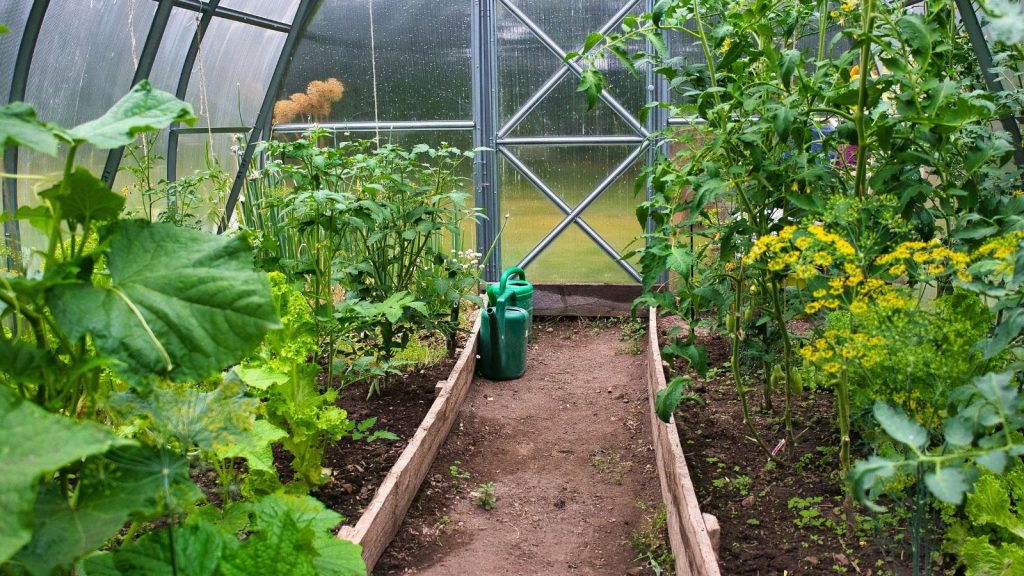
A final important point: Homesteading doesn’t have to be “all or nothing.” You don’t need to produce 100% of your food, water, and energy to call yourself a homesteader or to benefit from self-reliance. Every little bit counts.
When considering “how much land do I need,” think about it this way: How much land do I need for now, to do the homesteading activities I’m ready for?
Also, efficiency and creativity can stretch small acreage further than you’d expect. Vertical gardening, succession planting, permaculture design, and integrating animals and plants can make a small homestead incredibly productive.
The land you really need depends on your homesteading vision. Here are some ballpark takeaways:
- 0.1–0.5 acres (urban/suburban lot): Plenty for a garden and a few small animals (chickens, rabbits, bees).
- 1–2 acres: Enough for a serious large garden, some fruit trees, and small livestock like goats or pigs, possibly in limited numbers.
- 3–5 acres: Comfortable for a mix of garden, orchard, and a couple of larger animals (maybe a cow or two), if managed well.
- 10+ acres: Opens up virtually any homesteading pursuit – ample pasture, larger herds, timber, maybe a pond.
Remember that more land is not just more opportunity, it’s more work. It’s wise to start with what you can manage. Homesteading is a journey, not a destination – it’s about doing what you can, where you are, with the land you have.
References
- How to Evaluate Land for a Small Farm or Homestead | N.C. Cooperative Extension
- Home Gardening Statistics in the US | GreenPal
- Typical garden size & yield per square foot | Garden.org
- Less Room to Roam: Average Size of Home Lots in the U.S. is Shrinking | LawnStarter
- Small Agriculture | Practical Farming Materials for the Homesteaders · Subsistence Homesteads | NAL | USDA
- How Much to Plant Per Person in the Garden | The Spruce
- How Much Land is Needed to Raise a Year’s Worth of Food | Homesteading Family
- Irrigation Water Use | U.S. Geological Survey
- Animal Quantities | City of Tempe, AZ
- Can I (Legally) Keep Chickens or Goats in My Back Yard? | Nolo
- Owning a Dairy Cow or Goat | OSU Extension Service
- Working the Land With 10 Acres: Small Acreage Farming in the United States | USDA
James is a former logistics coordinator and wilderness safety instructor, whose practical experience taught him the value of sensible preparedness and calm resilience. Passionate about self-reliance, James teaches everyday skills—like water purification, emergency communication, and outdoor safety—to help people confidently handle life's disruptions without fear or overwhelm. His approachable style combines real-world insights with relatable, personal stories and experiences.
